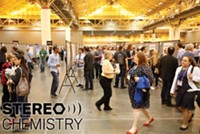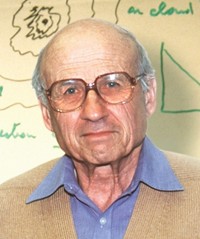Advertisement
Grab your lab coat. Let's get started
Welcome!
Welcome!
Create an account below to get 6 C&EN articles per month, receive newsletters and more - all free.
It seems this is your first time logging in online. Please enter the following information to continue.
As an ACS member you automatically get access to this site. All we need is few more details to create your reading experience.
Not you? Sign in with a different account.
Not you? Sign in with a different account.
ERROR 1
ERROR 1
ERROR 2
ERROR 2
ERROR 2
ERROR 2
ERROR 2
Password and Confirm password must match.
If you have an ACS member number, please enter it here so we can link this account to your membership. (optional)
ERROR 2
ACS values your privacy. By submitting your information, you are gaining access to C&EN and subscribing to our weekly newsletter. We use the information you provide to make your reading experience better, and we will never sell your data to third party members.
People
85th Anniversary of the Priestley Medal
C&EN celebrates the American Chemical Society's highest honor
by Linda R. Raber
April 7, 2008
| A version of this story appeared in
Volume 86, Issue 14

In 1923, the American Chemical Society inaugurated the Priestley Medal, its highest award, and presented it to Ira Remsen, a pioneer in advanced chemical education in the U.S. Also in 1923, ACS launched C&EN's predecessor, Industrial & Engineering Chemistry News Edition, which was mailed weekly to each of the society's approximately 14,000 members.
During the past 85 years, the Priestley Medal has been bestowed 72 times. In the beginning, ACS planned to present it every three years; since 1944, however, the medal has been presented annually. Each medalist has been written up in the pages of C&EN, usually with his or her picture on the magazine's cover and publication of the Priestley Medal address along with a profile. This year is no different. A profile of 2008 Priestley Medalist Gabor Somorjai begins on page 15, and his address, on page 21.
Priestley Medalists have won 15 Nobel Prizes, and 56 of the medalists have been admitted to the National Academy of Sciences. Twenty-six medalists have served as ACS president.
The Priestley Medal is given for a lifetime of accomplishments and usually goes to people far along in their careers. The average age of recipients is 68. Three medalists—Thomas Midgley Jr. (1941), James B. Conant (1942), and William O. Baker (1966)—brought down the average age, each receiving the medal at age 51. Robert S. Mulliken (1983), at 87, was the oldest to receive the medal. The names of the award recipients make up a list of chemistry's giants.
The medal's namesake, Joseph Priestley, was born 275 years ago in England. He discovered oxygen, which he called "dephlogisticated air." In 1874, a small group of chemists gathered at Priestley's home in Northumberland, Pa., to commemorate the discovery's centennial. Two years later, as a result of the contacts made there and the feeling of fraternity it engendered, ACS was formed in New York City. Chemical Heritage Foundation historian Mary Ellen Bowden has written an essay on the life and times of Priestley, focusing specifically on the praise and opprobrium that he received during his life span-and the medals or medalets cast commemorating his honor or infamy, depending upon who was striking the coin.
Also for this issue, C&EN invited recent Priestley Medalists to reflect on what receiving the medal has meant to them and how it has (or hasn't) changed their lives. Most responded with short vignettes.
A special online feature looks at the lives and contributions of 20 of the medalists who received awards between 1923 and 1989. Each C&EN writer participating in this project sought to unveil something personal and memorable about these giants of chemistry. We hope you enjoy reading them.
- 85th Anniversary of the Priestley Medal
- C&EN celebrates the American Chemical Society's highest honor
- Priestley's Medals
- The medals of the minister-scientist who discovered oxygen attest to his fame and infamy
- The Priestley Medalists, 1923-2008
- View a complete list of award recipients
- Living History
- These 12 Priestley Medal winners reflect on winning ACS's most coveted award





Join the conversation
Contact the reporter
Submit a Letter to the Editor for publication
Engage with us on Twitter